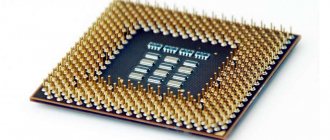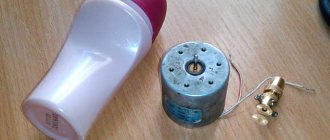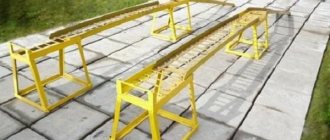A homemade hydroelectric power station (HPP) on water can be installed in a small pond (the pond serves as a dam) or a pond or river in which a small stream of water flows, for example a spring or spring.
It is at this place that We will try to make our new hydroelectric power station. Previously, on this pond, attempts had already been made to create a homemade hydroelectric power station from a squirrel wheel with a belt drive to a generator (by the way, it is shown in the photo at the end of the article), which produced a current of about 1 Ampere, this was enough to power several light bulbs and a radio in our small hunting lodge . This power plant operated successfully for more than 2 years, and we decided to create a more powerful version of a similar hydroelectric power plant in place of this mini-dam.
To manufacture a mini dam hydroelectric power station on the m you will need:
- sheet metal scraps and corners;
- Wheel disks (used from the housing of a failed Onan generator);
- Generator (it was made from two disks with a diameter of 11 inches from Dodge disc brakes);
- The drive shaft and bearings also seem to be from Dodge, we don’t remember exactly, so we removed them with our own hands from some other homemade product;
- copper wire with a cross-section of approximately 15 mm;
- some plywood;
- magnets;
- polystyrene resin for filling the rotor and stator.
What is a mini hydroelectric power station
First, let's define the operating principle and types of small hydroelectric power plants. The flow of a river or a falling water stream rotates the turbine blades and a hydraulic pipeline, which is connected to an electric generator - the latter generates electricity. Modern compact hydroelectric power plants have automatic control with the ability to instantly switch to manual mode in the event of an emergency. The designs of modern factory hydroelectric power plants make it possible to minimize construction work during equipment installation.
Types of mini hydroelectric power plants
Mini power plants include generating devices with a capacity from 1 to 3000 kW. Fundamentally, the thermal power plant consists of:
- turbines (water intake device);
- generating block;
- control systems.
According to the type of water resources used for generation, mini hydroelectric power stations are:
- Channel rivers. Such stations are built on small lowland rivers with reservoirs.
- Mountain. Stationary stations that use the energy of fast mountain currents.
- Industrial. Stations that use differences in water flow at industrial enterprises.
- Mobile. Stations using reinforced hoses for water flow.
Dam types of stations are characterized by high power, but the construction of a dam is expensive, and in this case it is impossible to do without permits. Getting involved with officials in our country is not just complicating your life, but calling into question the implementation of the best intentions, so we will abandon this idea right away.
Areas and advantages of application
An alternative to using oil stations is to use compressor-type units. However, if we compare installations of these types, then hydraulic power stations for hydraulic drives have a number of advantages.
- Due to the more compact size of such equipment, you have to spend significantly less money on its transportation, installation and operation.
- When operating hydraulic oil stations, significantly less energy resources are consumed, which also leads to a reduction in financial costs.
- Oil stations, compared to compressor equipment, have higher productivity and efficiency of use.
- The wide versatility of such equipment allows it to be connected to devices of various types and power.
- Compared to compressor equipment, oil stations produce significantly less noise during operation.
- Due to the ease of use and maintenance, specially trained, highly qualified personnel are not required to work with such equipment.
Pumping station as part of a hydraulic pipe bender
Hydraulic stations, naturally, are used to equip equipment on which a hydraulic drive is installed. In fact, with the help of such devices it is possible to operate a mechanism for almost any purpose. That is why hydraulic oil stations are successfully used in many areas. The technical capabilities and versatility of such devices allow them to be used for:
- static type hydraulic tools;
- electrical installation equipment;
- dynamic type hydraulic tools;
- equipment for railway and construction purposes;
- pumps and slurry pumps;
- equipment for drilling operations;
- injection molding machines;
- press equipment;
- devices used to lift and move large and heavy loads;
- equipping test stands;
- technological equipment for various purposes.
Oil station of lathe
Using hydraulic oil stations, they pump and purify oil, as well as lubricate and cool working elements of equipment for various purposes. Oil stations are used quite actively in cases where it is necessary to test pipeline systems, hydraulic equipment, hydraulic cylinders and various equipment.
If we talk about the areas of activity in which hydraulic oil stations are most actively used, then this should include:
- mechanical engineering;
- metallurgy;
- energy;
- construction;
- Agriculture;
- transport sector.
How does a mini hydroelectric power station work?
The principle diagram of the operation of a hydroelectric power station can be chosen from several options:
- Garland hydroelectric power station. From one bank of the river to the other, a cable with rotors strung on it is laid under water. The current rotates the rotors and, accordingly, the cable itself. One end of the cable is in a bearing, the other is connected to the generator.
- Propeller. An underwater structure resembling a wind turbine with narrow blades and a vertical rotor. A blade with a width of only 20 mm at a high rotation speed will provide minimal resistance. A blade of this width is selected at a flow speed of 0.8–2.0 m per second.
- Water wheel. A wheel with blades, partially submerged in the flow, and located at right angles to the surface of the water. The flow of water presses on the blades, rotating the wheel.
- Rotor Daria. Vertical rotor with complex blade surfaces. The liquid flowing around the blades creates different pressures, causing rotation.
The photo shows a mini hydroelectric power station based on a water wheel
Assembling a homemade magnet generator
Many people make a hydroelectric generator with their own hands, using the method of assembling a generator using neodymium magnets. You can take a car wheel hub with a brake disc as the basis on which the entire structure will be mounted.
Factory assembled, reliable and well-balanced; disks with permanent magnets are attached to the rotating part, between which the disk with the rotor windings will be fixed.
The advantage of a permanent magnet generator is that the magnetic field is controlled, this is achieved:
Therefore, the disks of the rotating rotor must be magnetically conductive; with a different material, the generator power will be halved. We draw the disks into 12 identical sectors, then glue magnets with a diameter of 25 mm and a thickness of 5 mm evenly along the perimeter of the disk in each sector with super glue.
The poles of the magnets alternate through one (SNSN....) and so on in a circle. You can increase the number of magnets and windings, there will be more poles, this will allow you to achieve more power at lower speeds.
But in our case, 12 magnets, windings with 08-1 mm wire, 100 turns each, generate sufficient power to charge a 12 V starter battery.
A wheel with a diameter of 5 m, rotating at a speed of 150 rpm, produces a current of at least 1A; at 200 rpm, the charging current reaches 4A, this is quite enough.
How to estimate the potential capacity of mini hydroelectric power stations
Before building a mini hydroelectric power station with your own hands, you need to determine the power you can count on. There is a reference relationship between the speed of water flow and the power that can be removed from the shaft in kW with a screw diameter of 1 m.
The speed of the flow is determined by measuring the time it takes for a chip thrown into water to travel a certain distance. Having made simple calculations, we obtain the flow speed in meters per second. If in this case the speed is less than 1 m/sec, then the construction of a hydroelectric power station will not be economically feasible.
At a flow speed of 2.5 m/s, the power will be 0.86 kW, at 3 m/s - 1.24 kW, at 4 m/s - 2.2 kW. The relationship is described by the dependence: the power of a hydroelectric power station is proportional to the cube of the water flow velocity. If the flow velocity at the proposed construction site is low, you can try to increase it by installing a difference in flow heights or by installing a drain pipe with a variable diameter at the outlet of the reservoir. The smaller the outlet diameter of the pipe, the higher the flow rate.
Options for generators used and load connections
General diagram for connecting a hydrogenerator
Generators can be used for automobiles, buses, or best of all low-speed tractor generators with permanent magnets.
They are more reliable, easier to operate and repair, and they do not have brushes.
1. generator G250-G1 2. P362 relay-regulator 3. car battery 4. ammeter 5 and 6 switches 7 fuse 8 fuel supply.
Depending on your conditions and capabilities, you can use 24V generators.
1. Generator G-228 2. voltage regulator 11.3702 3. 12V batteries connected in series 4. Ammeter for measuring charging current 5 and 6 switches 7. load.
In the simplest case, you can use 6ST-75 batteries, but for reliability it is of course better to install new lithium-ion starter batteries. They are of course more expensive, but lighter in weight than lead-acid ones, smaller in size, larger in A/H capacity, service life much longer, and superior to lead ones in all respects.
This is decided by everyone for themselves, depending on the purpose of the generator, operating conditions and financial capabilities.
Converter connection diagram
If you are going to use a hydro generator to power household electrical appliances designed to power an industrial network 220/50Hz, you will have to use voltage and current converters.
These devices convert 12 or 24 V battery direct current into 220 V alternating current. They come in different capacities; you need to choose depending on the current what maximum load you are going to use.
They are connected according to the above diagram instead of the load; the simplest converter of low power can be assembled yourself.
This circuit has been tested for years, works like a clock, is simple, and does not require configuration. The disadvantage is that it is low-power 100W.
Use economical fluorescent lamps of 13-15 W or LED lamps of 5-10 W are enough to illuminate a private house, garage and even a yard at night. 15 W lamps are as bright as 80 W incandescent lamps.
If you need more power to fully operate your home electrical networks, you can buy industrial converters. There is a large assortment of 12/220V on sale; 24/220V; 48/220V, power up to 5 kW or more.
The Pulso IMU-800 inverter converts 12V direct current into 220V/50Hz alternating current. maximum output power 800W. This is quite enough for lighting, connecting a TV, a refrigerator; for irons and boilers, more powerful inverters will be needed.
How to make a mini hydroelectric power station at home
The operating principle of a small homemade hydroelectric power station can be understood using the example of a bicycle with a headlight and a dynamo (generator).
- From roofing iron we make three blades with a length equal to the radius of the bicycle wheel (the distance from the central hub to the wheel rim) and a width of 3-4 cm.
- We install the blades between the spokes of the wheel, bending the edge of the blade around the spokes to secure it. The blades should be aligned evenly while maintaining the same angles between them.
- We immerse the wheel with blades in a fast river to a depth of one third to half the diameter of the wheel. The generated electricity will be enough, for example, to light a tent.
Drawing of one of the options for constructing a mini hydroelectric power station
An example would be a small hydroelectric power station for a farm with a capacity of 3-5 kW from scrap materials:
- The rotor can be made from an old metal cable drum with a diameter of 2.2 m. Using a grinder and welding at an angle of 45 degrees to the radius, 18 blades need to be welded. The rotor rotates on bearings. Support – metal pipe or angle.
- On the rotor you need to install a chain gearbox with a gear ratio (gear ratio) of 4. Next, the rotation will be transmitted through the VAZ 2101 driveshaft. The use of a driveshaft will reduce vibration, and the coaxiality of the drive and generator when using the shaft will be uncritical.
- You will need a step-up gearbox (coefficient - 40) and a three-phase generator. The generator rotation speed is about 3000 rpm. The total reduction ratio of the two gearboxes will be 40 x 4 = 160. The generator should be covered with a casing to protect it from moisture and safety. The estimated rotation of the water wheel should be about 20 revolutions per minute.
- An asynchronous motor can be adapted for the generator, and the control unit can be taken from any small machine. You will need a VVG NG cable 2x4 long from the rotor to farm buildings.
Plate reactor
A high-performance hydrogen generator capable of ensuring the operation of a gas burner is made of stainless steel plates measuring 15 x 10 cm, quantity - from 30 to 70 pieces. Holes are drilled in them for the tightening pins, and a terminal for connecting the wire is cut out in the corner.
In addition to sheet stainless steel grade 316, you will need to buy:
- rubber 4 mm thick, resistant to alkali;
- end plates made of plexiglass or PCB;
- tie rods M10—14;
- check valve for gas welding machine;
- water filter for water seal;
- connecting pipes made of corrugated stainless steel;
- potassium hydroxide in powder form.
The plates must be assembled into a single block, isolated from each other with rubber gaskets with a cut out middle, as shown in the drawing. Tie the resulting reactor tightly with pins and connect it to the pipes with the electrolyte. The latter comes from a separate container equipped with a lid and shut-off valves.
Note. We tell you how to make a flow-through (dry) type electrolyzer. It is easier to manufacture a reactor with submersible plates - there is no need to install rubber gaskets, and the assembled unit is lowered into a sealed container with electrolyte.
Scheme of a wet-type hydrogen installation.
The subsequent assembly of the generator producing hydrogen is carried out according to the same scheme, but with differences:
- A reservoir for preparing electrolyte is attached to the body of the device. The latter is a 7-15% solution of potassium hydroxide in water.
- Instead of water, a so-called deoxidizing agent is poured into the “bubbler” - acetone or an inorganic solvent.
- A check valve must be installed in front of the burner, otherwise when the hydrogen burner is turned off smoothly, the backlash will rupture the hoses and the bubbler.
To power the reactor, the easiest way is to use a welding inverter; there is no need to assemble electronic circuits. How a homemade Brown gas generator works is explained by a home craftsman in his video:











